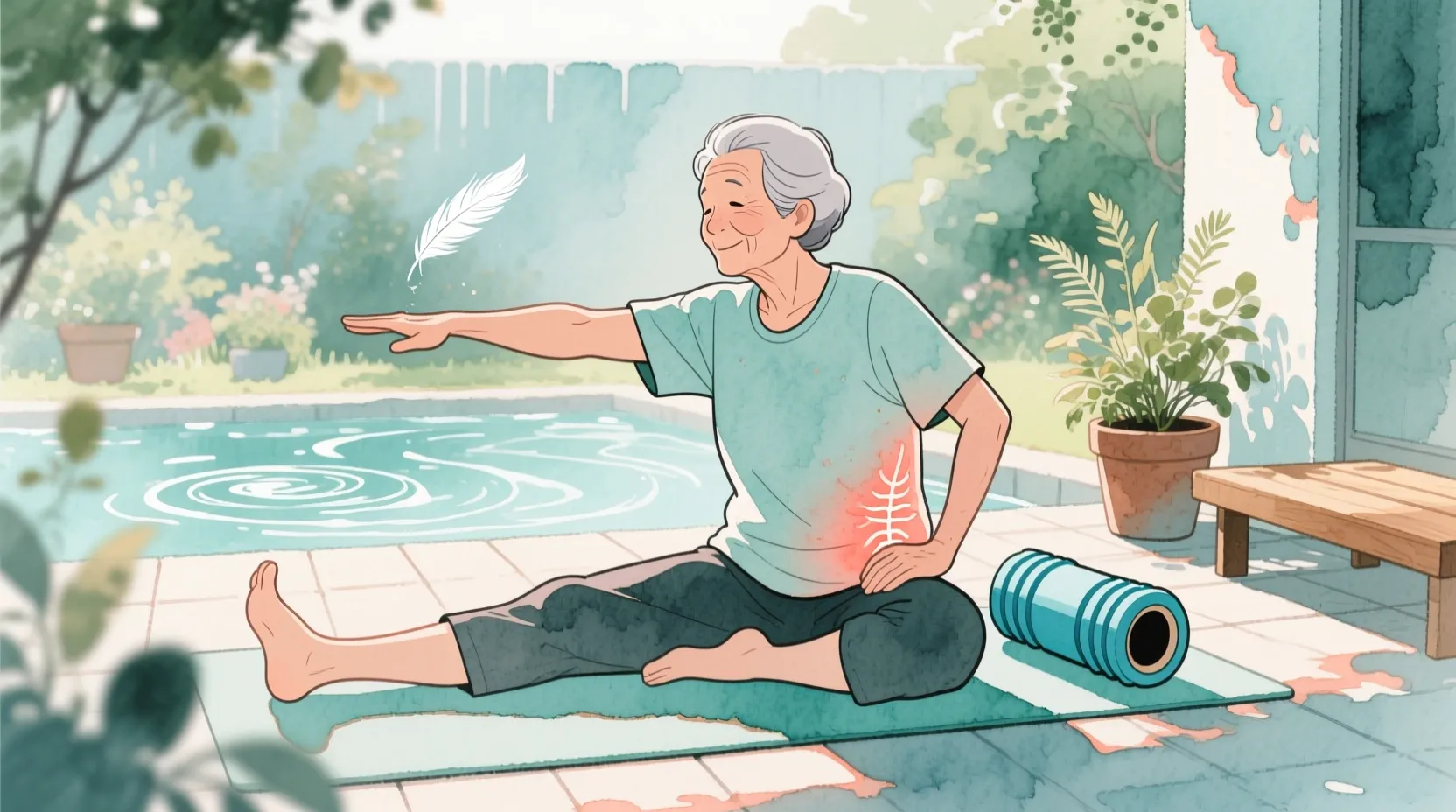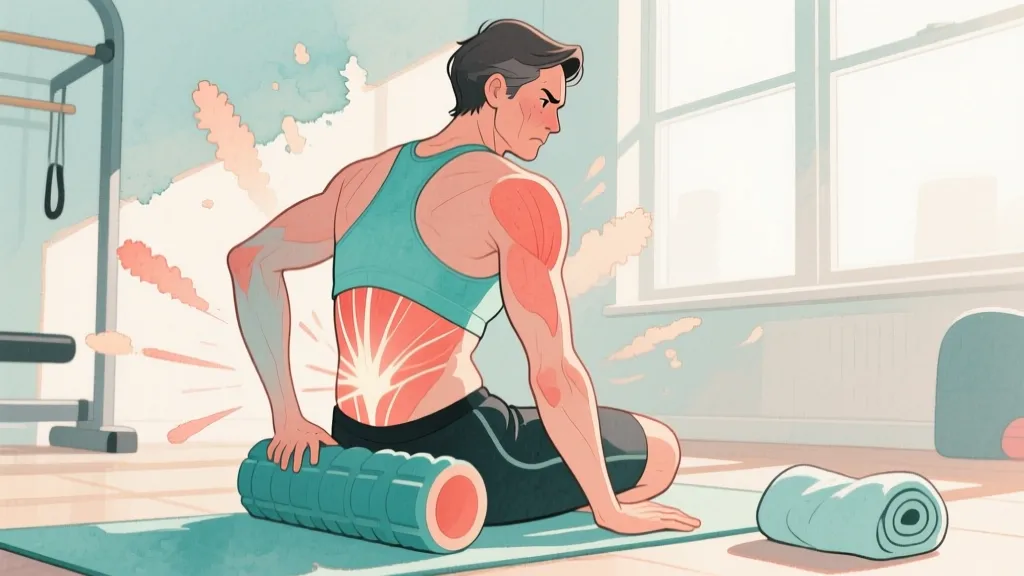Sciatica: A Guide to Causes & Pain Relief
There is a specific kind of pain that feels less like an ache and more like an electrical problem. It’s a sharp, shooting sensation that starts in your lower back or buttock and zings down your leg, sometimes all the way to your foot. It can be a dull throb or a jolt that makes you catch your breath. This is the signature of sciatica. It’s not just a simple backache; it’s a nerve issue that can disrupt everything from sitting at a desk to getting a good night’s sleep. The frustration of sciatica is that it feels both mysterious and relentless. Understanding what’s actually happening-and what you can do about it-is the first real step toward getting control back. This isn’t about miracle cures, but about practical, effective strategies to manage the pain and address the root cause.
What Exactly is Sciatica? (It’s a Symptom, Not a Disease)
The first thing to get straight is that “sciatica” isn’t a medical diagnosis in itself. It’s a symptom, just like a headache is a symptom. It’s the name we give to the pain caused by irritation or compression of the sciatic nerve. Think of it like the “check engine” light in your car. The light isn’t the problem; it’s just telling you that there’s a problem under the hood. Sciatica is the check engine light for your lower back and leg.
The Sciatic Nerve: A Quick Tour
To understand the pain, it helps to know the nerve. The sciatic nerve is the longest and thickest nerve in your body-it’s about as thick as your thumb at its origin. It’s formed by a bundle of nerve roots that exit from your lower spine (the lumbar region). These roots merge to form one large nerve that then travels from your lower back, through your buttocks, down the back of your leg, and finally branches out into your lower leg and foot. Ever wonder why the pain can travel so far? This path is the reason. A problem way up in your lower back can cause pain or numbness all the way down in your toes.
Why “Sciatica” Can Be a Misleading Term
Because sciatica is a general term for this radiating leg pain, people often use it to describe any pain in that area. But the cause of the nerve irritation is what really matters. Figuring out why the nerve is angry is the whole point of getting a proper diagnosis. The treatment for a herniated disc is different from the treatment for other causes. So, while we all call it sciatica, your doctor is focused on finding the “under the hood” problem that turned the light on.
The Common Culprits: What’s Actually Causing the Pain?
So what are these underlying problems? Why does the sciatic nerve get pinched in the first place? Most of the time, the issue originates in the lumbar spine.
The Herniated Disc: The Usual Suspect
This is the most common cause of true sciatica, especially in younger to middle-aged adults. Your spinal bones (vertebrae) are separated by soft, rubbery cushions called discs. Think of a disc like a tiny jelly donut, with a tough outer ring and a soft, gel-like center. A herniated disc-also called a slipped or ruptured disc-happens when a bit of that inner “jelly” pushes out through a tear in the outer ring. If that jelly pushes backward, it can press directly on one of the sciatic nerve roots. This direct pressure is what causes the intense, shooting sciatic nerve pain.
Spinal Stenosis: A Narrowing Problem
This is a more common cause in older adults. Spinal stenosis simply means a narrowing of the spinal canal-the space your spinal cord and nerve roots travel through. This narrowing is usually a result of age-related changes, like the thickening of ligaments or the development of bony growths called bone spurs. As the canal narrows, it can squeeze the nerve roots, leading to sciatic symptoms. The pain from stenosis is often worse when standing or walking and feels better when you sit down or lean forward (like over a shopping cart), which temporarily opens up the space in the spine.
That Pain in the Butt: Piriformis Syndrome
This one is a bit of a controversial diagnosis, but it’s a very real problem for some people. The piriformis is a small muscle located deep in your buttock. The sciatic nerve runs right underneath it, and in some people, it actually runs directly through the muscle. If the piriformis muscle becomes tight or spasms, it can squeeze and irritate the sciatic nerve, causing symptoms that are almost identical to true sciatica. This is often called “wallet sciatica” because sitting on a thick wallet can aggravate the muscle. The key difference is that with piriformis syndrome vs sciatica, the problem is in the buttock muscle, not in the spine itself.
Finding Relief at Home: Stretches and Self-Care That Work
When you’re in the middle of a flare-up, your first instinct might be to do a bunch of deep stretches to “loosen things up.” This can sometimes backfire. If the nerve is already inflamed and angry, aggressive stretching can make it even angrier. The approach to sciatica treatment at home should happen in phases.
The First 48 Hours: Calm Things Down
The initial goal is to reduce inflammation and calm the nerve.
- Ice, Heat, and Gentle Movement: For the first couple of days, applying an ice pack to your lower back for 15-20 minutes at a time can help reduce inflammation and numb the pain. After a few days, some people find that gentle heat-like a heating pad or a warm bath-helps to relax tight muscles. The most important thing here is to avoid positions that make the pain worse. This doesn’t mean strict bed rest, which can actually make things worse. It means gentle movement. Try to walk for short periods if you can, and avoid prolonged sitting or heavy lifting.
Essential Sciatica Stretches You Can Actually Do
Once the initial, severe pain has calmed down a bit, you can introduce gentle stretches. The goal is to relieve pressure on the nerve, not to force a deep stretch. These are some of the most effective stretches for sciatica.
- The Knee-to-Chest Stretch: Lie on your back with your knees bent and feet flat on the floor. Gently bring one knee up toward your chest, holding it with your hands. Hold for 20-30 seconds, feeling a gentle stretch in your lower back and buttock. Don’t pull so hard that it causes sharp leg pain. Do this a few times on each side.
- The Piriformis Stretch (Figure-Four): This is one of the best exercises for sciatica, especially if you suspect piriformis syndrome. Lie on your back with your knees bent. Cross the ankle of your painful leg over the opposite knee, making a “figure four” shape. If this is enough of a stretch, just hold it there. If you want more, reach through your legs and gently pull the bottom thigh toward you until you feel a stretch deep in the buttock of the painful side. Hold for 30 seconds.
The biggest mistake people make is thinking more is better. These stretches should feel relieving, not painful. If the pain shoots down your leg while stretching, you’re pushing too hard.
Beyond Stretching: Core Strength and Better Habits
Stretches can provide relief, but a strong, stable core provides long-term resilience. When we say “core,” most people think of six-pack abs. But the most important core muscles for back health are the deep, internal ones that wrap around your spine like a natural corset. These muscles-like the transverse abdominis and multifidus-provide stability and take pressure off your discs.
Why a Strong Core Matters More Than You Think
A weak core forces the larger muscles of your back to do all the work of stabilizing your spine, which they aren’t designed for. This can lead to muscle strain and put extra stress on your spinal discs. Building deep core strength doesn’t require endless crunches. Simple exercises like planks, bird-dog, and dead bug are far more effective. These exercises teach your body to hold your spine in a stable, neutral position while you move your limbs-which is exactly what you need to do in daily life. A small win that builds momentum is just being able to hold a plank for 20 seconds with good form.
Small Changes, Big Impact: Posture and Movement
How you sit, stand, and lift matters. When you slouch in a chair, you’re putting your lower spine into a flexed position that can put pressure on the back of your discs. Try to sit with your back supported and your feet flat on the floor. When you lift something, bend your knees and hips, keeping your back straight, and let your powerful leg muscles do the work. These small, conscious adjustments throughout the day can significantly reduce the cumulative stress on your lower back.
Red Flags: When to Stop Googling and See a Doctor
Most cases of sciatica will resolve with time and conservative self-care. But there are certain symptoms that should prompt you to seek medical attention right away.
The “I Can Manage This” Symptoms
- Pain that comes and goes.
- Pain that is improving with rest and gentle stretching.
- Mild numbness or tingling that isn’t getting worse.
The “Call a Doctor Today” Symptoms
These are the red flags that suggest a more serious problem that needs urgent evaluation. The most serious concern is a rare condition called cauda equina syndrome, which involves severe compression of the nerve roots at the very bottom of the spinal cord.
- Loss of bladder or bowel control: This is the biggest red flag. If you suddenly have trouble controlling your urination or bowel movements, this is a medical emergency.
- “Saddle anesthesia”: Numbness or loss of sensation in the areas that would touch a saddle-your inner thighs, buttocks, and perineum.
- Progressive weakness: If you notice your foot is “dropping” and you can’t lift it, or your leg is becoming significantly weaker, this needs to be checked out immediately.
If you experience any of these emergency symptoms, you should go to the nearest emergency room.
Quick Takeaways
- Sciatica is a symptom (radiating leg pain), not the actual diagnosis.
- A herniated disc is the most common cause, but spinal stenosis and piriformis syndrome are also culprits.
- During an acute flare-up, focus on calming the nerve with gentle movement and ice, not aggressive stretching.
- A strong, stable core is your best long-term defense against future episodes.
- Pay attention to red flags. Loss of bladder/bowel control is a true medical emergency.
- The goal of stretching is relief, not pain. If it shoots down your leg, back off.
- Most cases of sciatica get better with time and smart, conservative care.
Conclusion: Navigating the Path to Recovery
Dealing with sciatica is a journey of patience. It can be a slow, frustrating process with good days and bad days. The pain can be so disruptive that it’s easy to feel hopeless and to search desperately for a quick fix. I learned the hard way that there are no magic cures. My own bout with it taught me that trying to “fight through” the pain by pushing myself too hard in the gym or with aggressive stretching only made the nerve angrier and prolonged the recovery.
The real breakthrough came when I learned to listen to my body. I had to accept that the first step was to calm things down, not to attack the problem. From there, it was about consistency-doing the gentle stretches, focusing on small improvements in core strength, and being mindful of my posture. What’s worth remembering is that you have a tremendous amount of control over your recovery. By understanding the cause, applying the right strategies at the right time, and knowing when to seek help, you can navigate the path back to a life without that relentless, shooting pain.
Frequently Asked Questions
1. How long does sciatica usually last?
Acute sciatica, often from a herniated disc, typically improves significantly within 4 to 6 weeks with conservative care. Chronic sciatica, which lasts longer than 3 months, may require more intensive treatment. The duration depends heavily on the underlying cause and how you manage it.
2. What is the best way to sleep with sciatica?
Finding a comfortable sleeping position can be tricky. Many people find relief by sleeping on their back with a pillow under their knees, or on their side with a pillow between their knees. Both positions help to keep the spine in a neutral alignment and reduce pressure on the sciatic nerve.
3. Can walking make sciatica worse?
It depends. For some, gentle walking can help by reducing inflammation and releasing endorphins. For others, especially with spinal stenosis, walking can increase pain. The rule is to listen to your body. Short, slow walks are usually beneficial, but if it causes sharp, radiating pain, it’s best to stop.
4. Are massages good for sciatica?
Massage can be very helpful, especially if the cause is muscle-related like piriformis syndrome. A massage can help relax tight muscles in the lower back and buttocks that may be contributing to nerve compression. However, a deep tissue massage directly over the nerve during an acute flare-up could make it worse.
5. How can you tell the difference between sciatica and piriformis syndrome?
It can be difficult, as the symptoms are very similar. One clue is that pain from piriformis syndrome is often worse when sitting and may be focused more in the buttock. True sciatica from a herniated disc is more likely to be aggravated by bending forward or coughing/sneezing. A thorough physical exam by a doctor is the best way to differentiate them.




